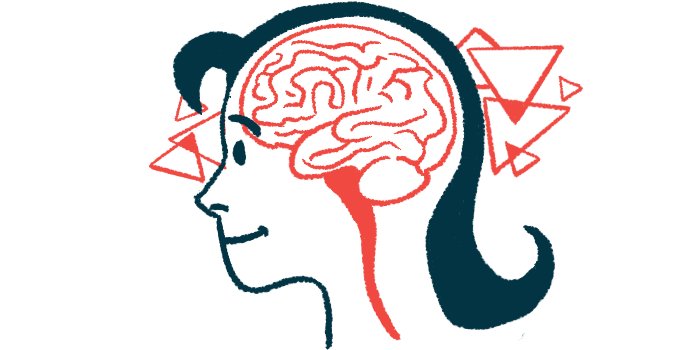Scientists ID brain circuit in mice that controls body’s left, right turns
Discovery may ultimately help in improving brain stimulation in Parkinson's

Scientists in Denmark have identified the specific nerve signaling pathway that runs from the brain to the spinal cord in mice to control whether the body makes right or left turns — findings that ultimately may help to treat problems with turning ability in people with Parkinson’s disease.
Modulating this neuronal pathway in the mouse model was seen to help normalize turning in the animals, the team showed.
“We have now discovered a new group of neurons in the brainstem which receives information directly from the basal ganglia [in the brain] and control the right-left circuit,” Ole Kiehn PhD, co-author of the study and a professor at the University of Copenhagen, said in a press release. .
The researchers suggest that this finding may be developed to further improve deep brain stimulation — a surgical procedure to stimulate specific brain regions — to normalize turning ability in Parkinson’s patients.
Their study, “Basal ganglia–spinal cord pathway that commands locomotor gait asymmetries in mice,” was published in Nature Neuroscience.
Work IDs neurons in brain that control the right-left circuit
Parkinson’s is marked by damage in the brain, particularly in a region called the basal ganglia. This brain region is known to be important for regulating movements, including a person’s ability to turn to the left or to the right. Problems turning, such as needing to take many small steps to turn, are a common symptom of Parkinson’s especially in the disease’s later stages.
When a person decides to move in a specific direction, signals flow from nerves in the brain down through the spinal cord and out to muscles in the body, ultimately causing the muscles to move. Turning to the right or left is a complex process that requires simultaneously coordinating movements — all autonomic, or unconsciously done — on both sides of the body.
Jared Cregg, PhD, a study co-author and also a University of Copenhagen professor, noted that some of the autonomic processes done in turning involve regulating the length of a person’s steps.
“When walking, you will shorten the step length of the right leg before making a right-hand turn and the left leg before making a left-hand turn,” Cregg said.
Although it’s previously been established that the basal ganglia helps to coordinate movements during turns, it wasn’t clear exactly how signals from this brain region are transmitted out to the body. Now, the researchers used a detailed battery of imaging and functional tests to find out.
The team discovered that, during a turn, nerves in the basal ganglia signal to a specific region at the base of the brain or brainstem called the PnO, for pontine reticular nucleus, oral part. The PnO then signals out to the spinal cord through specialized nerve cells called Chx10 Gi neurons.
“The newly discovered network of neurons is located in a part of the brainstem known as PnO. They are the ones that receive signals from the basal ganglia and adjust the step length as we make a turn, and which thus determine whether we move to the right or left,” Cregg said.
The scientists next conducted a series of tests in a mouse model where turning problems are generated by damaging one side of the basal ganglia. As a result, the mice will increasingly turn toward the damaged side, while having difficulty turning the other way. The researchers showed that, if they activated cells in the PnO or the downstream Chx10 Gi neurons, they could normalize turning in these mice.
“These mice had difficulties turning, but by stimulating the PnO neurons we were able to alleviate turning difficulties,” Cregg said.
Researchers say discovery may help advance brain stimulation surgery
Though these results are from mouse studies, the scientists suggest that similar principles could be used to help improve turning ability in people with Parkinson’s, where the basal ganglia is damaged but nerves in the brainstem and spinal cord usually aren’t.
For example, the team suggested the findings could help tailor more precise forms of deep brain stimulation, which is a surgical procedure in which electrodes are implanted in the brain to stimulate specific brain regions.
“Modulation of the PnO [to] Chx10 Gi pathway could potentially serve as a target for deep brain stimulation aimed at alleviating turning disabilities in Parkinson’s disease clinically,” the researchers wrote.
Right now, clinicians don’t have the ability to stimulate human brain cells as accurately as researchers can in mouse models — in this study, the team used advanced optogenetic techniques — but deep brain stimulation would be a logical starting point should these techniques advance to use in people.
Modulation of [this newly discovered] pathway could potentially serve as a target for deep brain stimulation aimed at alleviating turning disabilities in Parkinson’s disease clinically.
In humans, Kiehn noted, “the neurons in the brainstem are a mess.”
“Electric stimulation, which is the type of stimulation used in human deep brain sttimulation, cannot distinguish the cells from one another,” Kiehn said.
However, he added: “Our knowledge of the brain is constantly growing, and eventually we may be able to start considering focused deep brain stimulation of humans.”







